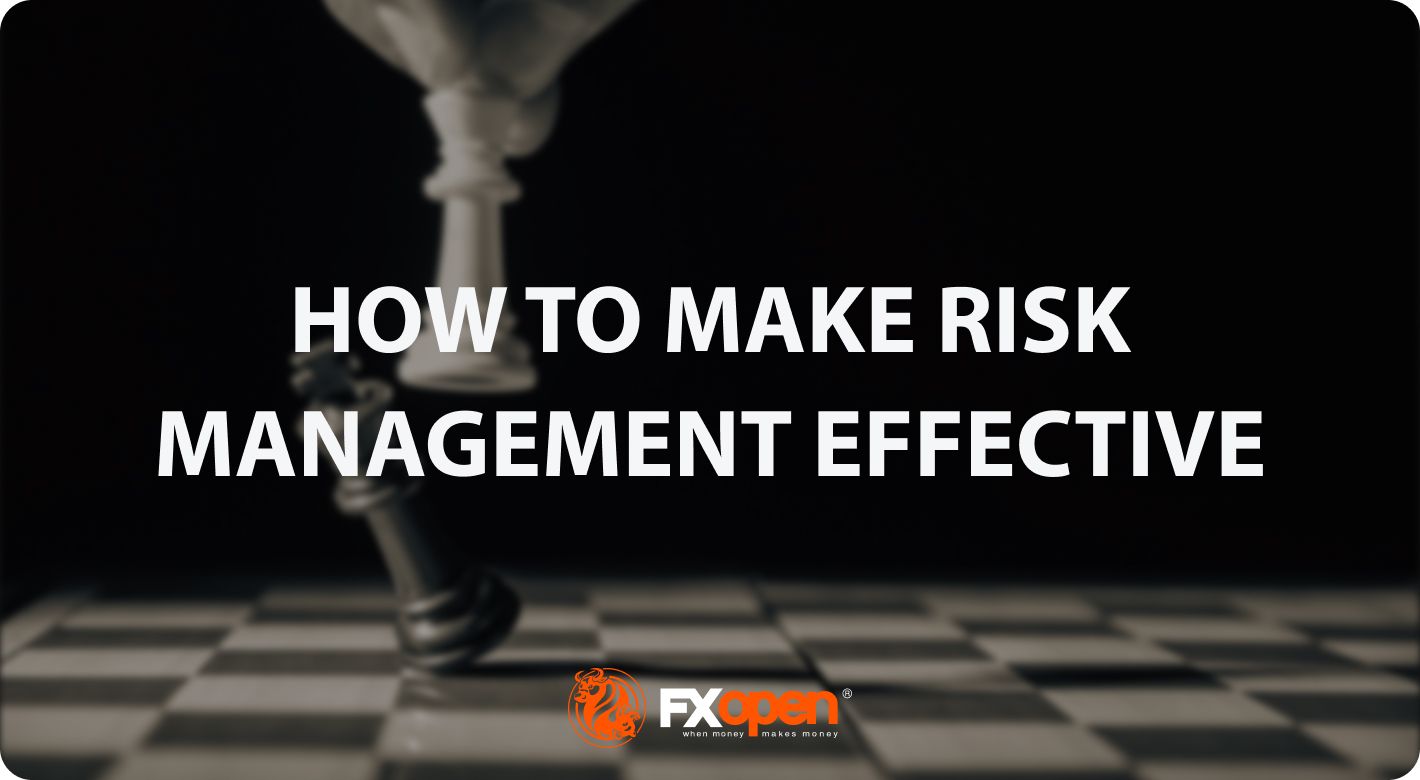FXOpen

The journey taken by every trader involves a constant effort to navigate the dynamic and often unpredictable financial markets. One of the most critical elements that separates successful traders from the rest is their ability to combine trading and risk management strategies effectively. This FXOpen article explores the various ways of managing risk in trading you may want to apply to produce better trading consistency in the short and long term.
Setting Trading Goals and Risk Tolerance
Traders establish clear and attainable objectives before initiating trades. By defining specific goals, they can maintain focus and discipline, avoiding impulsive decisions. It is crucial for traders to understand their risk appetite and tolerance in conjunction with their trading goals.
Traders differ in their comfort levels in relation to risk. To achieve a balanced and sustainable approach to trading, it is essential to align risk management strategies with individual risk tolerance. By adapting the risk management approach according to personal circumstances, traders can prevent unnecessary stress and enhance overall trading performance.
Position Sizing and Money Management
Position sizing is a critical component of risk management, as it dictates the amount of capital allocated to each trade. By calculating position size based on a predetermined risk percentage per trade, traders may limit potential losses and avoid risking an excessive portion of their capital on any single trade.
Money management techniques, such as the 1% rule, encourage traders to risk only a small percentage of their total capital on a single trade, safeguarding their funds against significant drawdowns. Properly implementing risk-reward ratios may also ensure that potential profits are appropriately balanced against potential losses.
Diversification and Portfolio Allocation
Diversification involves spreading risk across different assets or markets, aiming to reduce the impact of adverse events on a trader's overall portfolio. To avoid amplifying the potential consequences of a sudden market downturn, traders refrain from concentrating their investments in a single asset or market. Optimising portfolio allocation requires strategic capital distribution among various assets based on their risk levels and expected returns. It is crucial to understand correlations between assets as low or negatively correlated assets can provide enhanced diversification benefits.
Stop-Loss Strategies
Stop-loss orders serve as a protective mechanism for traders, automatically concluding positions once prices hit a predefined threshold. It's imperative to grasp the skill of establishing suitable stop-loss levels contingent on prevailing market circumstances and the volatility of the asset. This proficiency is fundamental for adeptly managing risks.
In addition, traders have the option of employing trailing stops. These stops enable traders to secure profits as a trade progresses favourably, guaranteeing the safeguarding of gains while simultaneously permitting the potential for additional price escalation. Charting and trading platforms such as TickTrader also hold valuable tools for technical and fundamental traders to place their exit points.
Analysing and Adapting to Market Conditions
Skilful implementation of risk management strategies in trading demands constant attentiveness and flexibility. Traders need to consistently keep a watchful eye on market dynamics and pinpoint shifting trends and fluctuations in volatility. Through a thorough analysis of market data and indicators, traders can fine-tune their risk management approaches appropriately.
Recognising the limitations of risk management in extreme market conditions, such as during a financial crisis or major economic event, allows traders to prepare for and mitigate potential losses during black swan events.
Stress Testing and Scenario Analysis
Stress testing entails assessing the performance of a trader's portfolio when faced with unfavourable market conditions or hypothetical situations. Through the simulation of these scenarios, traders can uncover vulnerabilities in their risk management approaches and make necessary modifications. This process of scenario analysis empowers traders to prepare for various market results, crafting backup plans that mitigate the chances of hasty and unconsidered choices during periods of turbulence.
Psychology and Risk Management
In the world of risk management, one important element is managing emotions. When fear and greed creep in, they can cloud judgement and lead to impulsive decisions that put traders at unnecessary risk. That's why it's crucial to develop discipline, patience, and mental resilience. By sticking to risk management rules and maintaining a clear and rational mindset during market turbulence, traders can avoid costly emotional mistakes. It's all about emphasising the importance of following the planned risk management strategy
Final Thoughts
Traders understand that proper practice is the only way to maintain long-term consistency in the financial markets. While proper risk management may help you stay in the profitable range, losses are inevitable. As you get better with the concept, you can open an FXOpen account to enjoy low spreads and fast execution speeds, all adding to your success.
This article represents the opinion of the Companies operating under the FXOpen brand only. It is not to be construed as an offer, solicitation, or recommendation with respect to products and services provided by the Companies operating under the FXOpen brand, nor is it to be considered financial advice.
Stay ahead of the market!
Subscribe now to our mailing list and receive the latest market news and insights delivered directly to your inbox.








